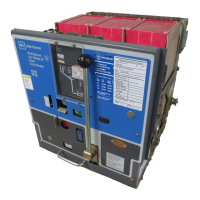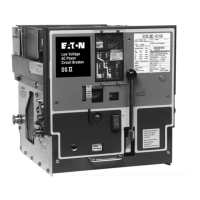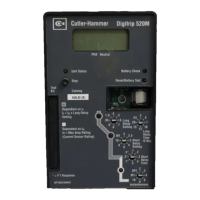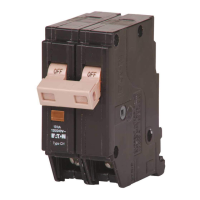Page4
1.8. 33-790-11
Safety Features
Type DS (DSL) Breakers are manufactured with several
built-in interlocks and safety features to reduce hazards
and provide proper operating sequences. UNDER NO
CIRCUMSTANCES SHOULD THEY BE MADE INOP-
ERATIVE AS THIS MAY RESULT
IN
BODILY INJURY
OR PROPERTY DAMAGE.
1.
Positive mechanical indicators on front panel show
whether the breaker is open
or
closed, and whether
the closing spring is charged
or
discharged.
2.
Closing Spring Automatic Discharge - Mechanical
interlocking automatically discharges the closing
springs when the breaker is removed from its com-
partment.
3.
Mechanical interlocking prevents levering
of
breaker
unless its contacts are open. Contacts cannot be
closed until the breaker is levered into TEST or CON-
NECT positions.
4.
Mechanical interlocking prevents closing
of
breaker
contacts while it is being levered into
or
out
of
its cell,
or
while it is standing
in
any intermediate location
between the TEST and the CONNECT positions
or
the DISCONNECT position.
5.
Provisions for Padlocking-Breakers can be pad-
locked open to prevent electrical
or
manual closing.
This padlocking can also secure the breaker
in
the
connected, test,
or
disconnected position by prevent-
ing levering.
6.
In
the CONNECT position automatic mechanical
interlocking prevents the disconnecting
or
withdrawal
of
a closed breaker. This avoids drawing dangerous,
destructive arcs on the disconnecting contacts when
the circuit is energized.
7.
In
the REMOVE position mechanical interlock sys-
tem prevents the closing springs from being charged
or remaining charged.
8.
The integral fuses
on
Types DSL-206 and DSL-416
breakers are inaccessible until the breaker is com-
pletely withdrawn from its compartment, thereby
assuring complete isolation.
Likewise, the Type DSL-632 and DSL-840 fuses are
inaccessible until the separate fuse truck is completely
withdrawn and the fuses isolated. The fuse truck is key
interlocked with the breaker to prevent withdrawing
or
insertion unless the breaker is open.
Effective October 1998
Courtesy of NationalSwitchgear.com

